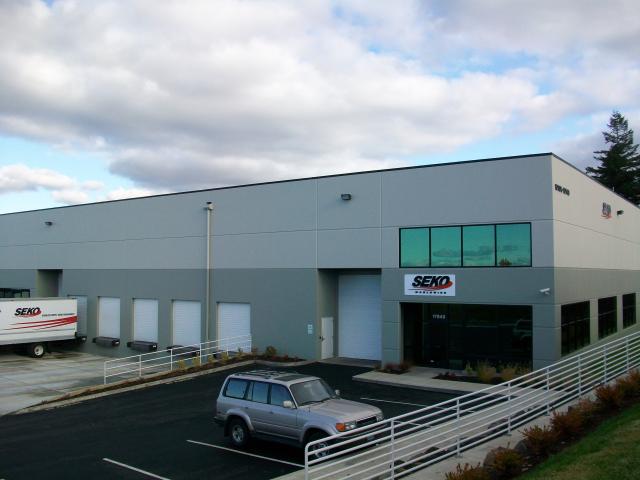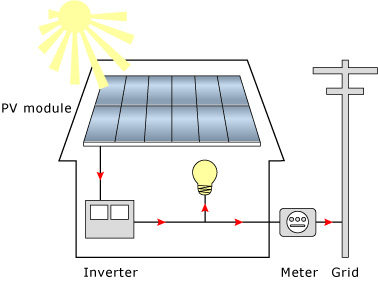 Seko Worldwide, Portland office Click to enlarge |
Incentives greatly reduce system cost.
Solar expected to provide 80% of the company's power need. |
Solar brightens local business
Another local business has commited itself to GREEN by installing rooftop solar panels at its new 33,000 square foot facility in the Wilkes East area.
The Portland office of SEKO Worldwide, a personalized global freight transportation and logistics provider, is installing a 31Kw 'grid-tie' solar system in an efforts to increase its energy independence. The 143 panel photovoltaic (PV) system will supply about 80% of the company's lighting, heating, and air conditioning power needs when it becomes operational this December.
Paul Burkhart, owner, says any excess power generated by the solar panel system that is not used by their company is automatically sent back into the power grid, reducing their monthly power bill. He also said current financial incentives where an important factor in the project. These incentives will help pay for the new solar system in about 3 years, compared to 12-15 years without incentives. Installation time is fairly short, about 2-3 weeks. The new facility which opened in April 2009 is located at 17949 NE Sandy Blvd and employs 14 people.
You can learn more about residential and business solar project costs & incentive programs below.
How Solar Works

Photovoltaic, or PV, refers to the process of turning sunlight into electricity. Here’s how PV systems convert energy from the sun into electric energy you can use:
- A photovoltaic array (one or more solar panels) converts solar energy to direct current (DC power) electricity.
- An inverter converts direct current (DC power) into the alternating current (AC power) that is used in homes & businesses.
- A circuit breaker panel feeds the electricity from the inverter into your home or business to use.
- If your solar array produces more power than you can use, the excess electricity flows 'backward' through your meter into the power grid, reducing your bill by the number of kilowatt-hours sent back to the grid.
Solar financial incentives
When figuring your project costs, consider these financial incentives:
Residential:
- Energy Trust of Oregon: Energy Trust offers a financial incentive of $1.75/watt, up to a maximum of $20,000.
- State: The Oregon Department of Energy offers a state solar tax credit of $3/watt, up to a maximum of $6,000.
- Federal: A federal solar tax credit is available for 30 percent of the installed cost (after the Energy Trust incentive).
Business:
- Energy Trust of Oregon: Energy Trust offers a financial incentive between $1.25 and $0.75 per watt, depending on system size and subject to a maximum incentive per host.
- State: Oregon offers a state solar tax credit of up to 50 percent, with the maximum eligible cost.
- Federal: A solar tax credit or grant option is available.
Learn more
Portland General Electric has some great information on their website to help you get started!
- Generate Your Own Power: Residential, Business Portland General Electric website
- Go Solar: Residential, Business Portland General Electric website
- Costs & Incentives: Residential Business Portland General Electric website
















